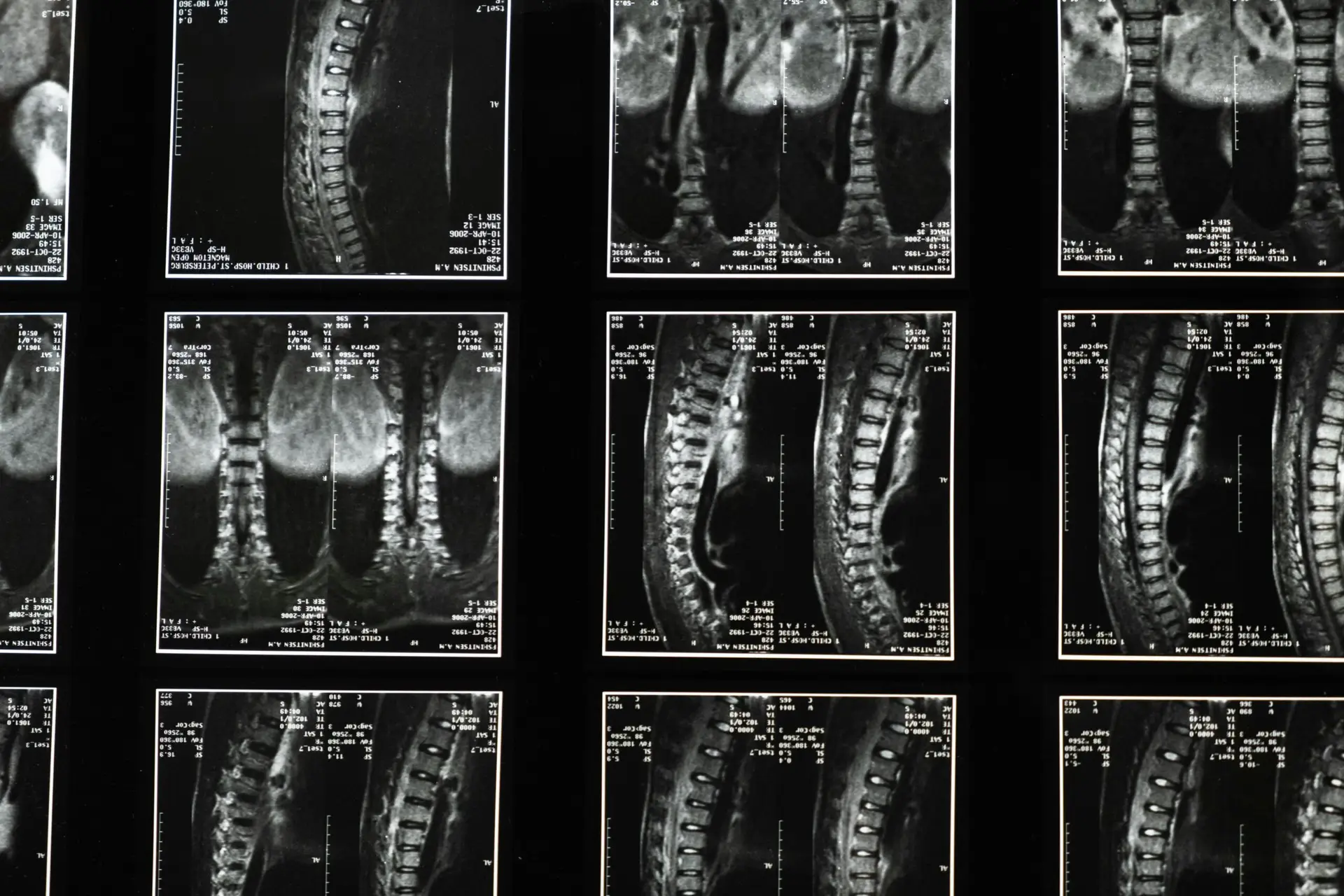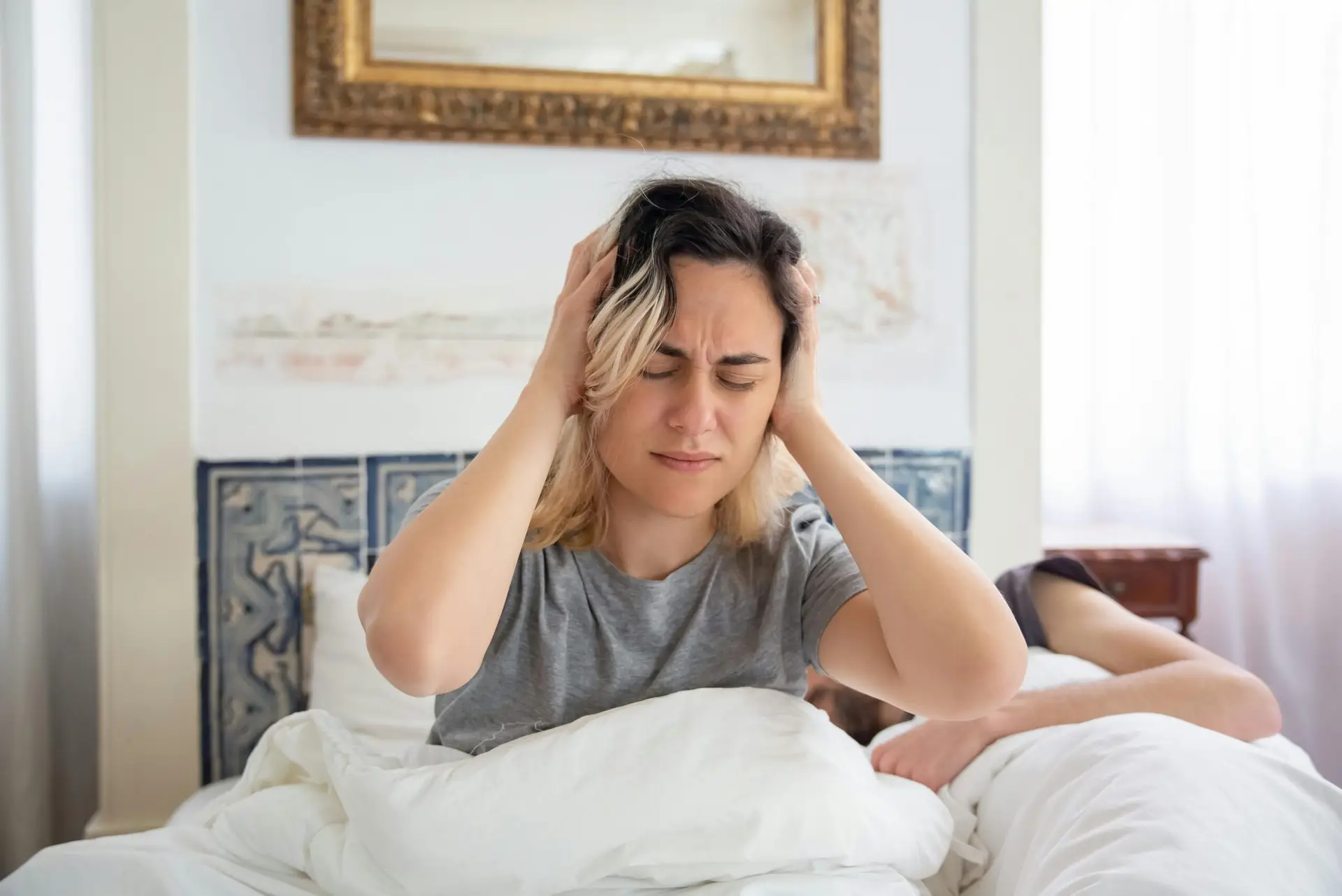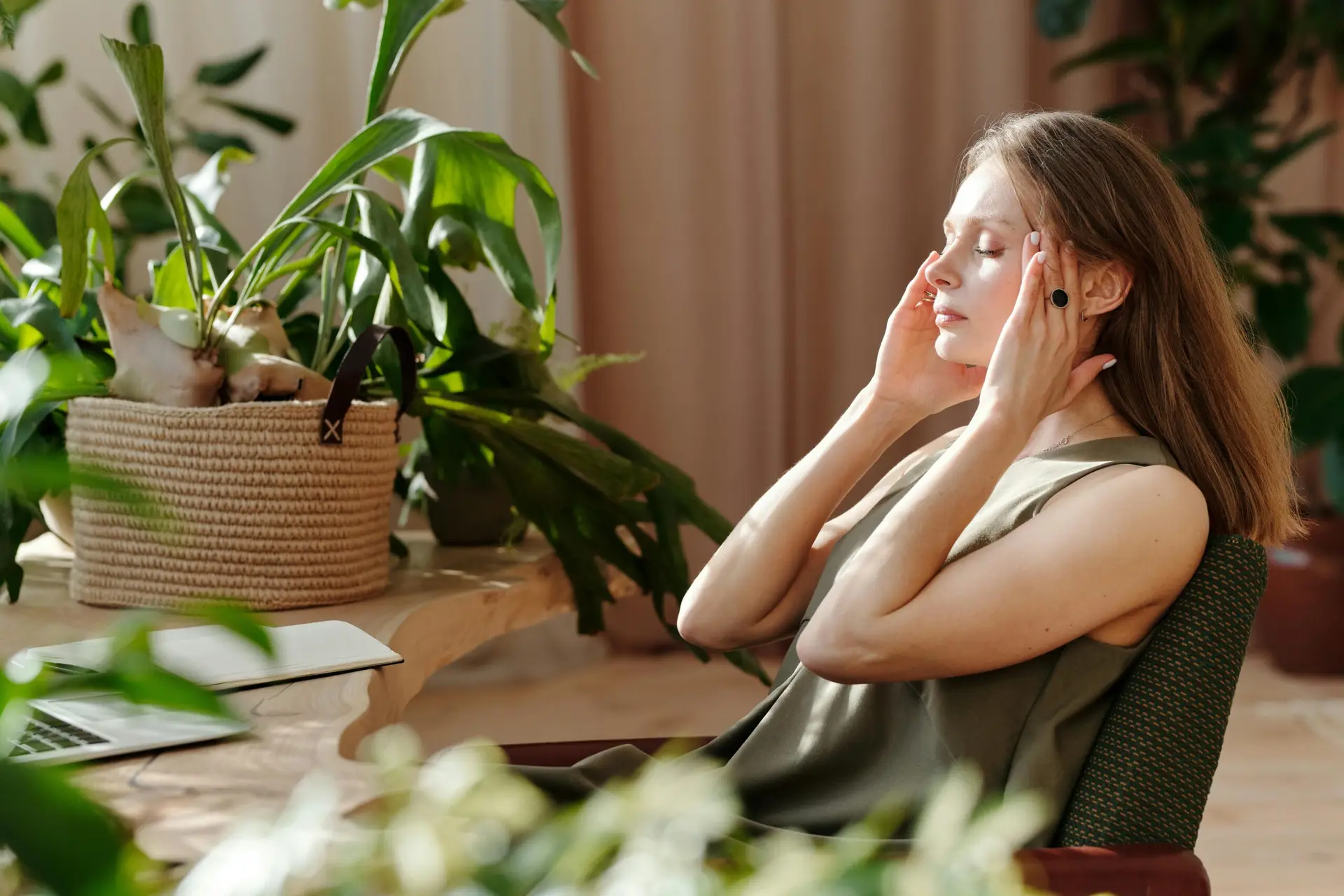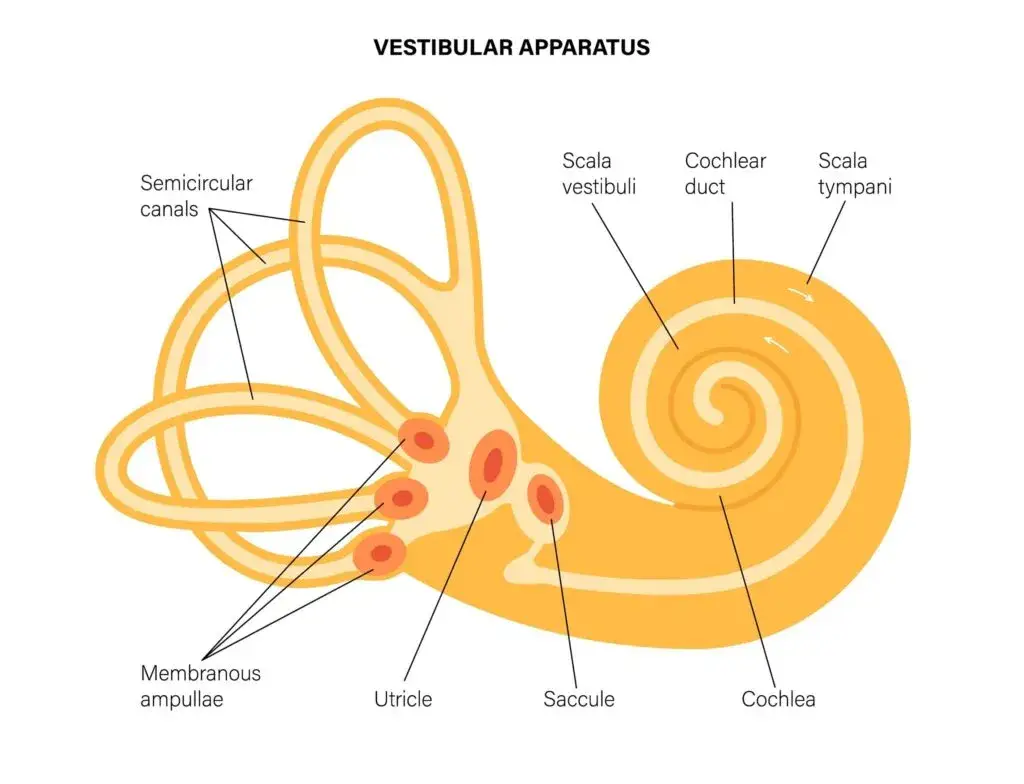
Scoliosis Doctor Near Me: If you’ve been searching “scoliosis doctor near me” and wondering whether there’s a gentle, precise, natural path to help you or your child, you’re in the right place. At Lavender Family Chiropractic in Sarasota and Lakewood Ranch, our focus is the upper cervical spine—the atlas (C1) and axis (C2) at the very top of your neck. Why start there for something that shows up lower in the back?
Because posture is orchestrated from the top down. When the head isn’t level and centered over the body, the brain—and especially the brainstem—triggers muscular compensations all the way down to the pelvis and feet. Over time, those compensations can look and feel like scoliosis: shoulder unleveling, a tilted rib cage, a rotated pelvis, and a spine that curves to keep your eyes level with the horizon.
This article explains what scoliosis is, how the brainstem and upper cervical region regulate posture and muscle tone, why a subtle misalignment at C1/C2 can fuel global imbalance, and how Upper Cervical Chiropractic—performed with gentle, precise, no popping or twisting techniques—can be an important part of the plan for people with scoliosis and spinal pain. We’ll also share how our Sarasota team—Dr. Rusty Lavender, Dr. Jacob Temple, and Dr. Will Guzinski—uses 3D CBCT imaging and functional nervous system scans (Tytron paraspinal infrared thermography) to locate the root of the problem and tailor care that supports real, measurable change.
Scoliosis Doctor Near Me: What Exactly Is Scoliosis?
Scoliosis is an abnormal, three-dimensional curvature of the spine. While many people think of it as a simple side-to-side “C” or “S” curve seen on an x-ray, scoliosis almost always includes rotation of the vertebrae and postural changes that affect the whole body—shoulders, rib cage, hips, knees, and feet. Severity is often described by the Cobb angle on imaging; however, numbers never tell the whole story. Function matters: pain levels, endurance, balance, breathing, digestion, and how your body feels and moves day to day.
Key points to remember:
- Scoliosis is three-dimensional, not just a side bend.
- The body compensates above and below the curve to keep your eyes level.
- The nervous system constantly adapts posture via reflexes tied to the brainstem.
- Addressing only the curve—without considering the neurologic drivers—can miss a crucial part of the picture.
The Many Kinds of Scoliosis (And Why They Matter)
Understanding the type of scoliosis helps set realistic goals and guide care. Here are the main categories you’ll hear about in clinic and in research:
Idiopathic Scoliosis
The most common category, especially in adolescents. “Idiopathic” means a single clear cause hasn’t been identified. It’s typically divided by age of onset:
- Infantile (0–3 years)
- Juvenile (4–9 years)
- Adolescent (10–18 years)
Adolescent idiopathic scoliosis (AIS) often accelerates during growth spurts. While genetics, connective tissue properties, and neurosensory processing can play roles, postural control and vestibular regulation (how the brain interprets head position and gravity) are frequently discussed contributors. That’s why an upper cervical approach can be so relevant: atlas/axis misalignment may distort head-on-neck mechanics and the sensory input that guides postural reflexes.
Degenerative (Adult) Scoliosis
In adults—especially after age 40—spinal discs and facet joints can degenerate asymmetrically, producing de novo (new) scoliosis or worsening an existing adolescent curve. Pain, stiffness, leg symptoms, and balance changes are common. Upper cervical care can’t reverse arthritic changes, but it can reduce postural strain and help normalize muscular tone, which often lessens pain and improves quality of life.
Neuromuscular Scoliosis
Seen when underlying neurologic conditions affect muscular control and tone (e.g., cerebral palsy, muscular dystrophies). Curves can progress rapidly and may be more rigid. Even here, improving head positioning and brainstem signalingcan support better comfort, care tolerance, and breathing mechanics—often as part of a team approach with medical providers, therapists, and bracing specialists.
Congenital Scoliosis
Due to vertebral formation or segmentation differences present at birth. These curves are structured in the bones themselves and sometimes require close medical and surgical collaboration. Upper cervical care doesn’t “reshape bones,” but optimizing neuromuscular balance and posture can help the body function better around structural differences.
Syndromic Scoliosis
Associated with syndromes that influence connective tissue and neurology (e.g., Marfan, Ehlers-Danlos). Tissue laxity and sensory variation can challenge postural stability. Gentle, precise upper cervical adjustments aim to reduce strain on stabilizing musculature and improve proprioceptive input, which may aid daily comfort and endurance.
Functional (Postural) Scoliosis
Here, the spine can show curvature due to uneven muscle tone, leg-length discrepancy, pelvic tilt, or habitual postures—but the curve may reduce significantly when the underlying driver is addressed (for example, when lying down or after postural correction). This is where upper cervical care often shines: correcting a top-down head-neck imbalance can cascade through the kinetic chain, reducing asymmetry and allowing the body to reorganize into a more balanced stance.
Posture Is a Brainstem Story: How Muscle Tone and Balance Are Set from the Top Down
The brainstem integrates signals from your inner ear (vestibular system), eyes (oculomotor system), and body sensors (proprioception) to govern posture and muscle tone. Several reflex pathways work together, including:
- Vestibulo-spinal reflexes: Help you right your head and stabilize your core against gravity.
- Reticulo-spinal pathways: Influence baseline muscle tone and readiness throughout the body.
- Cervico-collic and cervico-ocular reflexes: Use neck joint receptors (especially upper cervical) to fine-tune head position and eye movement.
When the atlas (C1) tilts or rotates enough to distort head-on-neck alignment, the nervous system may interpret the environment as “off-center.” To keep your eyes level and horizon stable, your body recruits asymmetric muscle tone—tightening and lengthening different muscle groups along the spine, rib cage, and pelvis. This can present as:
- One shoulder higher than the other.
- Rib prominence on one side (especially with rotation).
- A pelvis that seems twisted or tilted.
- A “longer” or “shorter” leg appearance when lying down due to pelvic rotation.
- A head tilt or subtle chin-to-shoulder posture.
Left unaddressed, these compensations can harden into habit, contributing to scoliotic patterns, joint overload, and the chronic pain cycles many patients know too well.
How Upper Cervical Misalignment Can Contribute to Scoliosis
Let’s connect the dots:
- Head-Neck Imbalance
If the atlas is misaligned, your head may subtly tilt or rotate. The brainstem prioritizes level eyes, so it commands the body to compensate. - Asymmetric Muscle Tone
Postural reflexes increase tone on one side and dampen it on the other—across the neck, between the shoulder blades, into the lumbar paraspinals, and even the hip rotators. - Global Compensation
To stand and move without falling, your body curves and rotates. Over time, these patterns can look like scoliosisor worsen an existing curve. - Mechanical Overload & Pain
Joints under asymmetric load degenerate faster, discs dry out, and fascia tightens. The result? Back pain, rib pain, neck pain, headaches, and fatigue.
Upper cervical care aims to remove the initial neurologic driver—the head-neck imbalance—so your body can normalize tone and redistribute forces more evenly. While we can’t promise a specific degree-change on every x-ray, many patients notice improved posture, less pain, and better stamina when the brainstem is receiving clear, balanced input from the upper cervical spine.
What Is Upper Cervical Chiropractic? (Gentle, Precise, No Popping or Twisting)
Upper Cervical Chiropractic focuses exclusively on the top of the neck. At Lavender Family Chiropractic, we begin with a thorough evaluation, then determine if you have a correctable misalignment at C1/C2 influencing your posture and symptoms. Our approach is:
- Gentle & Targeted: No twisting or wrenching. Adjustments are precise impulses delivered with speed and finesse—comfortable for kids, teens, adults, and seniors.
- Data-Driven: We utilize 3D CBCT imaging (cone-beam CT) when appropriate to visualize the unique shape and alignment of your upper cervical joints in three dimensions. This helps us understand exactly how your atlas is misaligned and how to correct it.
- Functional Nervous System Scans: We employ Tytron paraspinal infrared thermography to assess patterns of neurovascular tone along your spine. These scans help us decide when to adjust and when to let your body hold—a key to long-term stability.
- Hold, Don’t Chase: A hallmark of upper cervical care is teaching your spine to hold the correction. The better you hold, the more your nervous system can recalibrate posture and the longer your improvements tend to last.
- Advanced Knee-Chest Technique: Our doctors utilize advanced, research-informed knee-chest and related upper cervical methods tailored to your anatomy. The adjustment feels like a quick, light tap—patients are often surprised by how gentle it is.
Our Step-By-Step Scoliosis Process at Lavender Family Chiropractic
- Consultation & Case Review
We listen. When did you first notice the curve? Is there a family history? What aggravates or eases your pain? Do you experience headaches, dizziness, rib pressure, shortness of breath, or fatigue? - Precise Upper Cervical Exam
We assess posture, head tilt, shoulder/pelvis levels, functional leg checks, balance, and movement patterns. We take Tytron thermal scans and may recommend 3D CBCT imaging to map the atlanto-axial relationship. - Personalized Care Plan
Based on findings, we craft a plan to correct and stabilize your upper cervical alignment. Frequency varies by age, curve behavior, and symptom intensity. Our goal is to reduce neurologic stress so your body can unwind. - Re-Scans and Re-Evaluations
We retest regularly. As your nervous system quiets, we expect to see more symmetrical thermal patterns, improved posture photos, and—in many cases—changes in how your clothing fits or how you feel standing in the mirror. - Team-Based Support
For moderate to severe curves, we may collaborate with orthopedic, bracing, and physical therapy colleagues. Upper cervical care pairs well with targeted stabilization and breathing work. We’ll help coordinate what’s needed. - Plan to Maintain
Once stable, we transition to less frequent check-ups to help you hold your correction, protect your gains, and keep daily life moving forward.
Who We Help (Kids, Teens, and Adults)
- Adolescents with AIS: During growth spurts, keeping the head centered can reduce postural strain and help kids move, train, and focus with fewer aches.
- Adults with Degenerative Scoliosis: Many adults notice less back and hip pain, better walking endurance, and improved sleep when nervous system tension drops.
- Athletes & Active Adults: Balanced head-neck mechanics enhance coordination, strength symmetry, and breathing mechanics, which may translate to better training and recovery.
- Desk Workers & Caregivers: Long hours, lifting, and stress can amplify asymmetries. Gentle upper cervical work supports resilience and comfort.
Signs and Symptoms Often Linked with Scoliotic Patterns
- Persistent neck or mid-back pain that worsens with standing or sitting.
- One shoulder higher, one pant leg always longer, or a twisting sensation in the torso.
- Headaches, TMJ tension, or a head tilt in photos.
- Rib discomfort on one side, especially with deep breaths.
- Low back pain or hip fatigue after walking.
- Balance changes, feeling “crooked,” or visual/vestibular strain.
These don’t prove scoliosis, but they are clues that postural reflexes and muscle tone may be out of balance.
What Results Can You Expect?
Every spine is unique, but many patients report:
- Less daily pain and stiffness
- Improved posture in photos and mirrors
- Better endurance for standing, walking, and household tasks
- Easier breathing and rib mobility
- Fewer headaches and neck tension
We don’t claim to “snap a curve straight.” Instead, we aim to normalize head-neck alignment, reduce neurologic stress, and help your body balance itself. Real progress looks like how you feel, how you function, and how well your spine holds its improved posture over time.
Simple Home Habits That Support a Straighter, Happier Spine
- Sleep smart: A supportive pillow that keeps your head level (we fit many patients for posture-friendly pillows) can help you hold corrections.
- Breathe 360°: Practice low, wide rib breathing—expand side ribs and back ribs, not just the upper chest.
- Desk hygiene: Screen at eye level, hips slightly above knees, feet grounded. Reset every 30–45 minutes with a posture break.
- Walk daily: Rhythmic gait drives spinal pumping and left-right balance.
- Balance drills: Gentle vestibular and proprioceptive exercises (we’ll show you options) reinforce head-centered posture.
Why Choose Lavender Family Chiropractic in Sarasota & Lakewood Ranch
- Three-Doctor Team: Dr. Rusty Lavender, Dr. Jacob Temple, and Dr. Will Guzinski bring focused expertise in upper cervical care.
- 3D CBCT Imaging & Tytron Scans: Modern diagnostics to see clearly and act precisely.
- Gentle, Precise Adjustments: No popping, twisting, or cracking—comfortable for all ages.
- Nervous System First: We treat your posture as a brainstem-guided, whole-body process.
- Local, Trusted, Patient-Centered: Our office is built around listening, educating, and empowering.
Address: 5899 Whitfield Ave, Ste 107, Sarasota, FL 34243
Website: www.chiropractorsarasotaflorida.com
Phone: (941) 243-3729
Instagram: @lavenderfamilysrq TikTok: @drrustylavender
Real-World Wins (De-Identified Patient Stories)
- “Standing Tall Again”
A 14-year-old with a right thoracic curve and daily mid-back ache. After upper cervical correction and a few months of holding, mom noticed shirts hanging more evenly and fewer after-school complaints. Re-scans showed calmer thermal patterns; posture photos revealed a more level head and shoulders. - “Less Rib Pinch, More Miles”
A 52-year-old runner with adult degenerative scoliosis reported rib pressure that limited deep breaths and hill work. With upper cervical stabilization, she described easier breathing, fewer post-run spasms, and better sleep—without changing her training plan beyond smarter recovery. - “Desk Job, Better Balance”
A 38-year-old analyst with a mild lumbar curve and tension headaches. After restoring atlas alignment, his headaches decreased, and his “floating” sensation at the end of long workdays subsided. He now keeps a standing desk and walks at lunch to hold his gains.
(Results vary. These stories illustrate how nervous system-first care can support comfort and function in real life.)
Top 15 FAQs About Scoliosis and Upper Cervical Chiropractic
1) Can upper cervical chiropractic “fix” scoliosis?
Upper cervical care doesn’t claim to “straighten bones.” It aims to restore head-neck balance so the nervous system can normalize muscle tone. Many patients experience better posture, less pain, and improved endurance—sometimes with favorable changes on re-imaging or posture photos.
2) How do you know if the atlas is misaligned?
We combine 3D CBCT imaging (when appropriate) with Tytron nervous system scans, posture analysis, and a precise upper cervical exam. This shows us if, how, and when to adjust.
3) Is the adjustment safe and comfortable?
Yes. Our technique is gentle and specific, with no twisting or forceful cracking. Most patients are surprised by how light it feels—and how profound the results can be.
4) My child was told to “watch and wait.” Should we start now?
Early, gentle care can be valuable because we’re working with a nervous system that’s still learning posture. We often coordinate with pediatricians, orthopedists, and, when indicated, bracing professionals.
5) I’m an adult with degenerative scoliosis. Is it too late?
Not at all. While we can’t reverse arthritis, reducing neurologic asymmetry often means less pain, better gait, and more energy for your day.
6) Will I need exercises too?
We’ll recommend simple, spine-smart habits and may add vestibular and proprioceptive drills. If you need more, we’ll coordinate with trusted therapists.
7) How long before I feel changes?
Some notice relief within days; others progress over weeks as their correction holds and the nervous system adapts. We monitor with scans and re-evaluations so you can see and feel your progress.
8) Can scoliosis cause headaches or TMJ pain?
Yes. Asymmetric tone can strain the neck and jaw. Correcting upper cervical misalignment often helps reduce headache frequency and jaw tension.
9) Do you work with bracing or surgical teams?
Absolutely. We collaborate with area providers. Our role is to keep the head-neck alignment optimized so everything else works better.
10) Is imaging required?
We recommend imaging when clinically indicated. 3D CBCT provides unparalleled detail of the upper cervical joints so we can be precise and conservative with care.
11) How often are adjustments?
It depends on your case. Early on, visits may be more frequent as we establish stability. Our long-term goal is fewer adjustments and longer holds.
12) What if I’ve tried other chiropractic before?
Upper cervical chiropractic is a specialty focused solely on C1/C2 with different exams, imaging, and correction strategies. Many patients find it’s the missing piece.
13) Do you help with related issues like dizziness or rib pain?
Yes. Because posture is brainstem-driven, optimizing upper cervical function can positively influence balance, breathing mechanics, and rib motion.
14) Do you take insurance?
Our office is out of network with insurance. Many of our patients receive a superbill to submit to their insurance for reimbursement based on their coverage. We offer many different payment options as well as finance options.
15) How do I get started?
Call (941) 243-3729 or visit www.chiropractorsarasotaflorida.com to schedule a consultation. We’ll review your history, perform a precise exam, and outline a personalized plan.
Why “Chiropractor Sarasota Florida” and “Upper Cervical Chiropractor Near Me” Matter for Scoliosis
If you’re in Sarasota, Bradenton, or Lakewood Ranch and you search “upper cervical chiropractor near me,” you’re looking for more than symptom relief—you’re looking for root-cause clarity. Scoliosis is complex, but the nervous system’s role is central. By working at the top of the spine, we help the body organize itself from the inside out.
Many patients also come to us for co-existing issues—headaches, vertigo, TMJ, neck pain, low back pain—and appreciate having one team that can address the neurologic posture drivers behind them. Whether you found us searching “chiropractor near me,” “chiropractor Sarasota Florida,” or even “Migraine doctor near me” or “Vertigo doctor near me,” our focus is the same: align the head and neck, calm the nervous system, and help your body function the way it was designed.
Areas We Serve in Southwest Florida
We proudly help patients from Sarasota, Bradenton, Lakewood Ranch, Parrish, Ellenton, Venice, Osprey, Punta Gorda, St. Petersburg, Siesta Key, Longboat Key, Lido Key, and Myakka City. If you’re near the Suncoast and you’re seeking a scoliosis doctor near me approach that’s gentle, precise, and neurologically informed, we’re here for you.
Your Next Step (And a Word of Encouragement)
Scoliosis isn’t just a curve on a film—it’s how you feel in your body every day. If your posture feels off, if your shoulder or rib cage won’t settle, if your back is working too hard by noon, we’d love to take a careful look at your upper cervical alignment and show you what’s possible when your brainstem and posture are back in sync.
Lavender Family Chiropractic in Sarasota Florida offers complimentary consultations to learn more about you. Click the link below!
https://intake.chirohd.com/new-patient-scheduling/724/lavender-family-chiropractic
Visit our Website!
To learn more about us go to http://www.chiropractorsarasotaflorida.com
We also service Bradenton, Parrish, Ellenton, Ruskin, Venice, Tampa, St. Pete, Osprey, Longboat, Lakewood Ranch, Myakka City.
If you are in Tampa, Fort Myers, or Salt Lake City, you can visit my other locations! NeckWise Upper Cervical. Visit, www.neckwise.com
If you are not local, visit www.uccnearme.com to find a doctor in your area.
Lavender Family Chiropractic
5899 Whitfield Ave, Ste 107, Sarasota, FL 34243
Call: (941) 243-3729
Visit: www.chiropractorsarasotaflorida.com
Instagram: @lavenderfamilysrq TikTok: @drrustylavender
Gentle. Precise. No popping, twisting, or cracking. Just a smarter way to help your body stand tall—from the top down.





